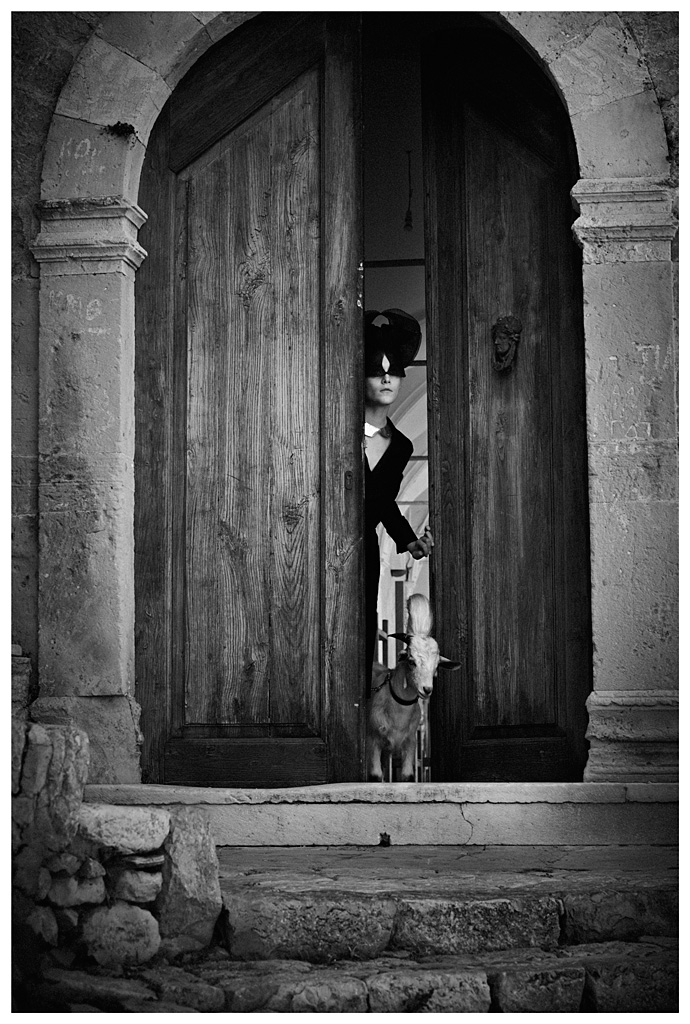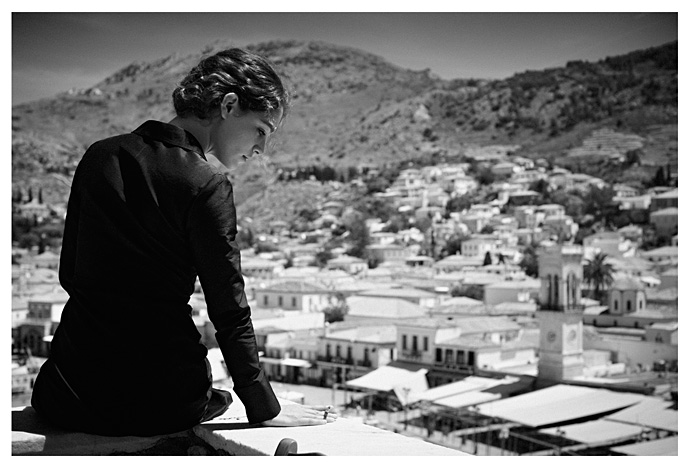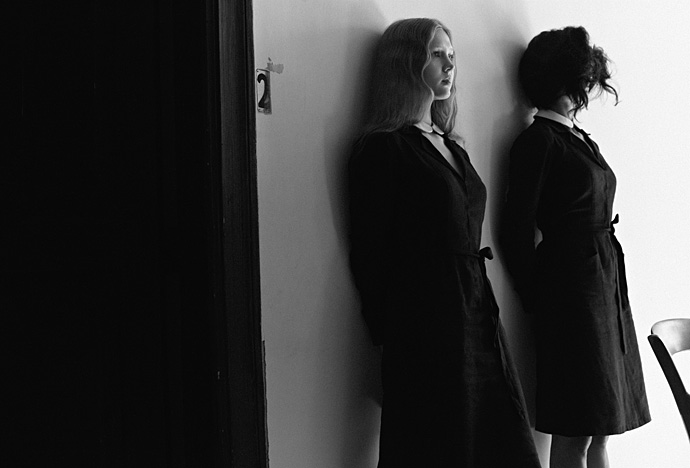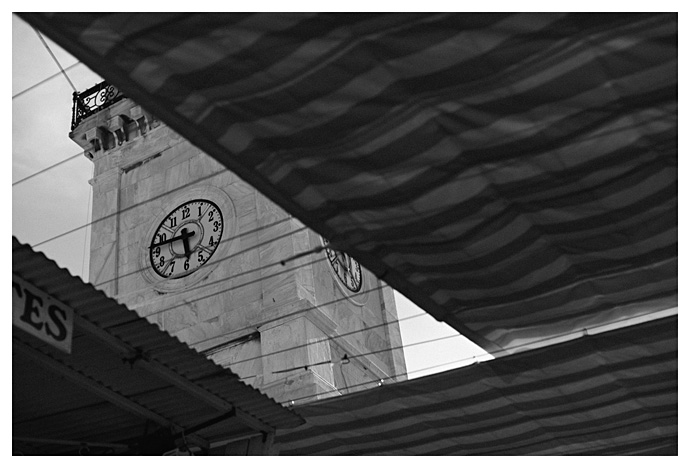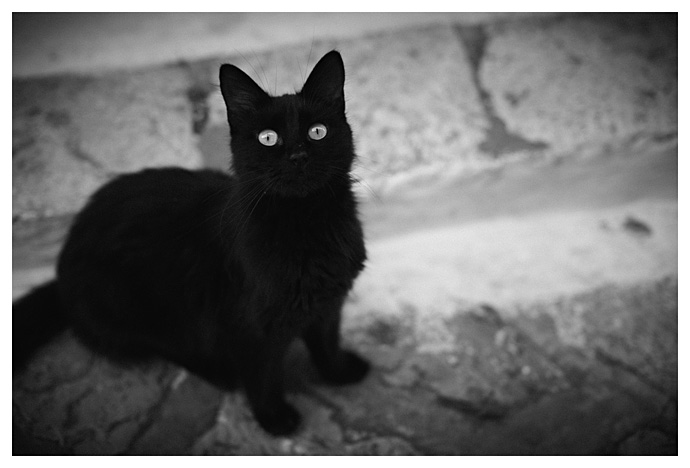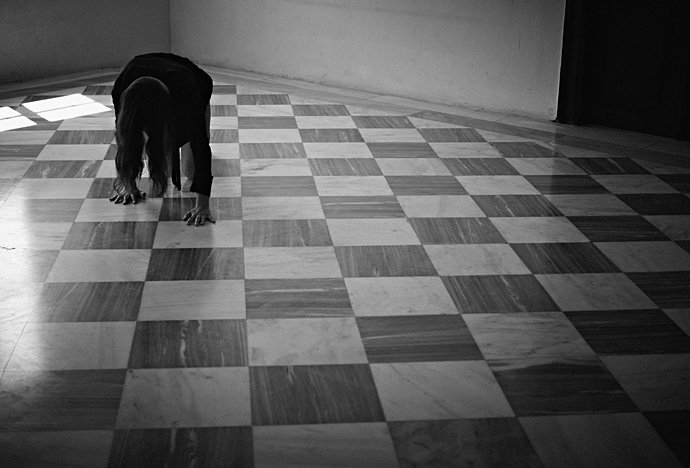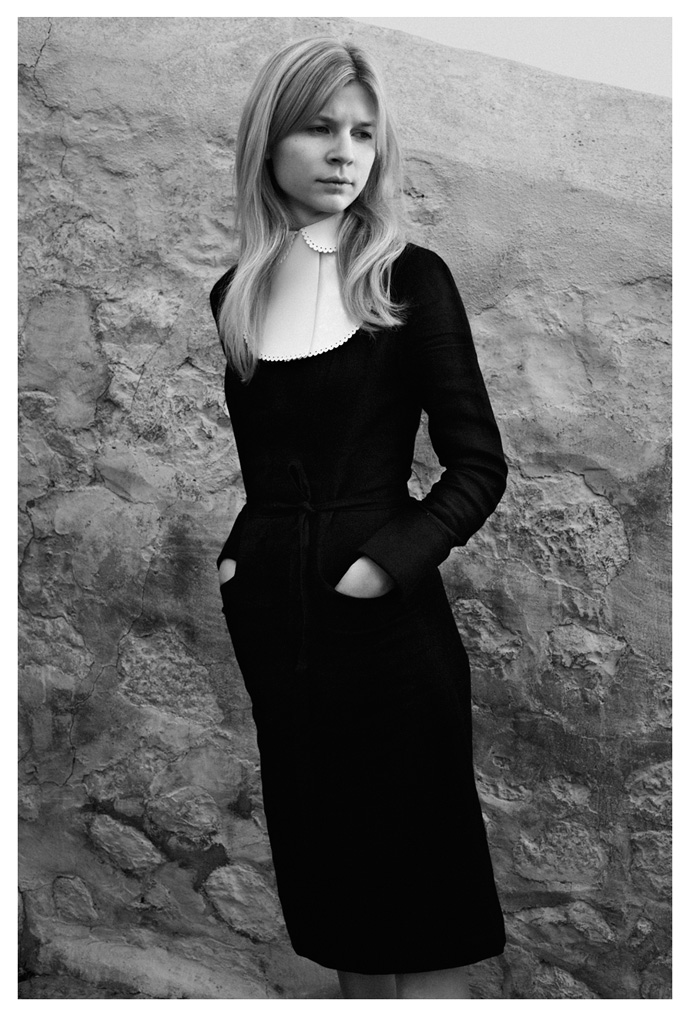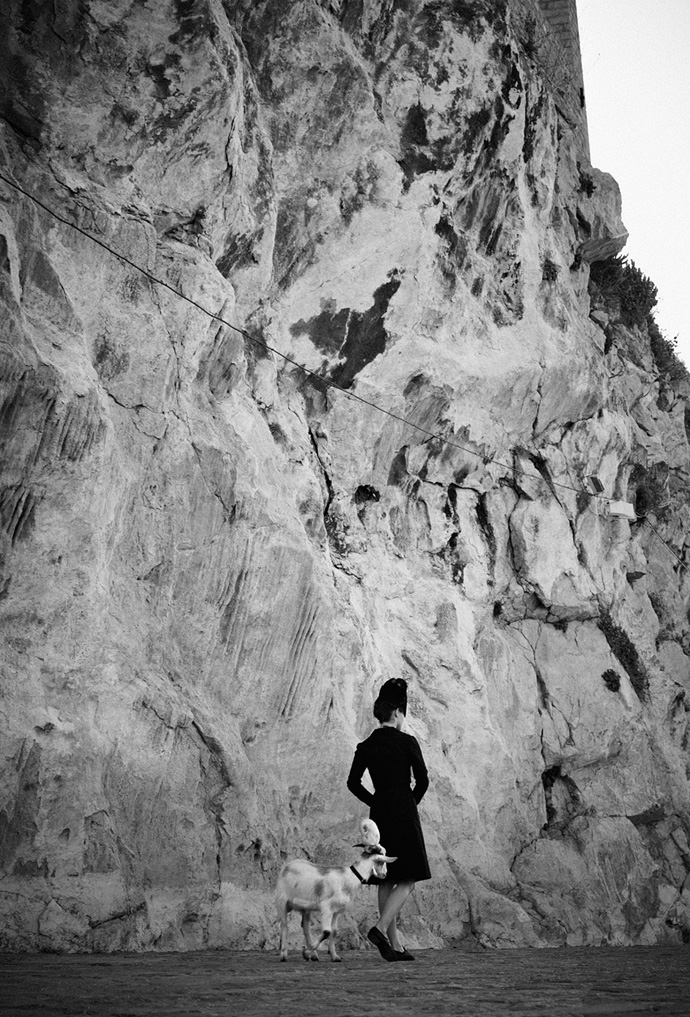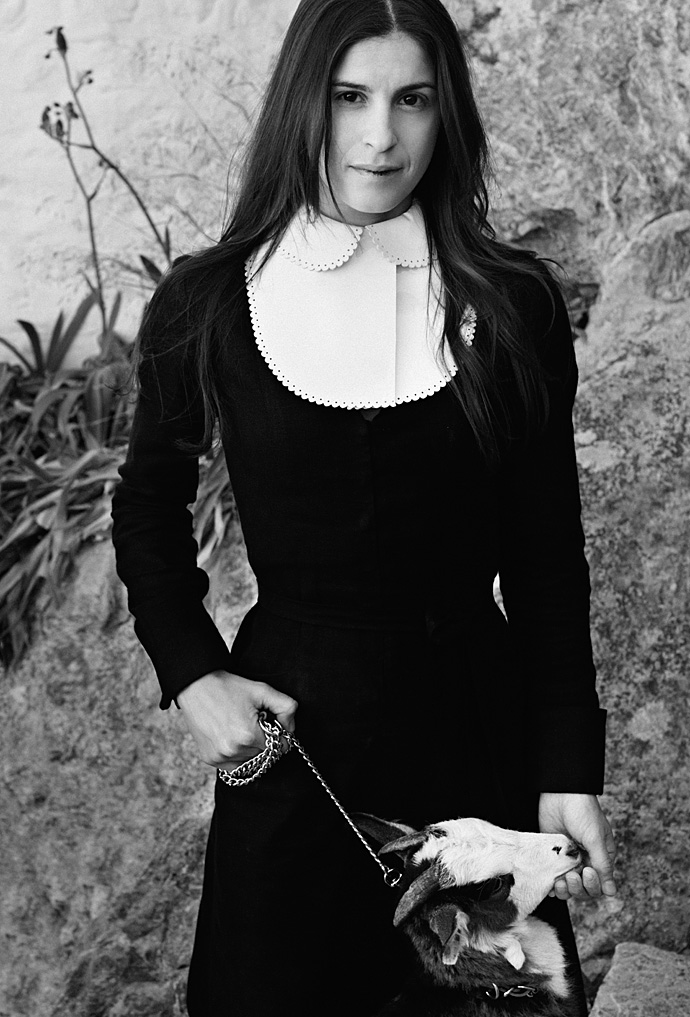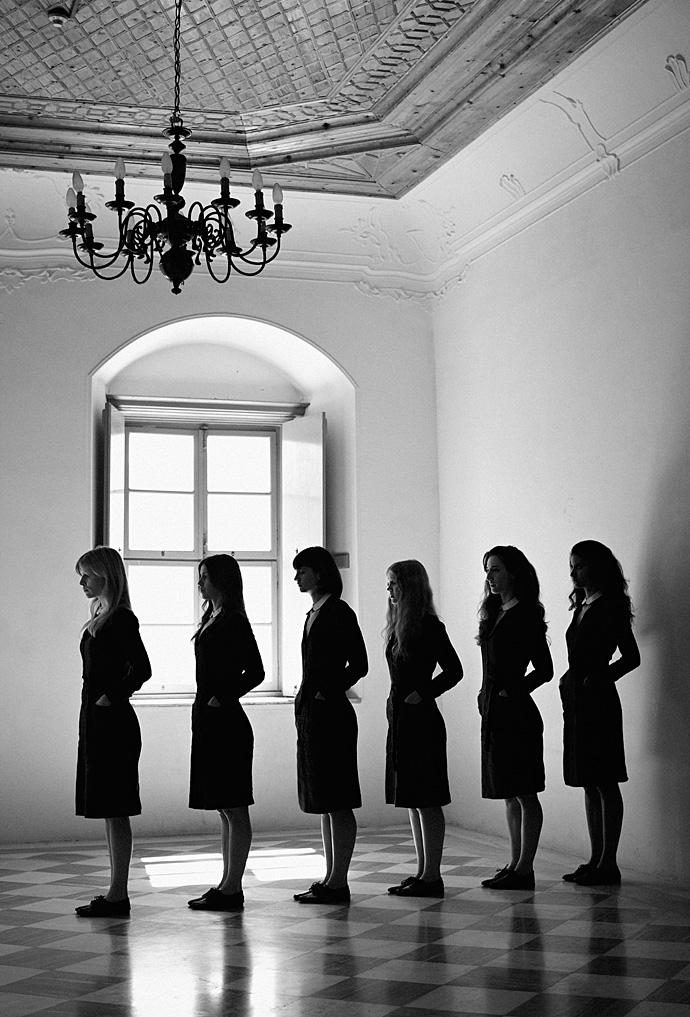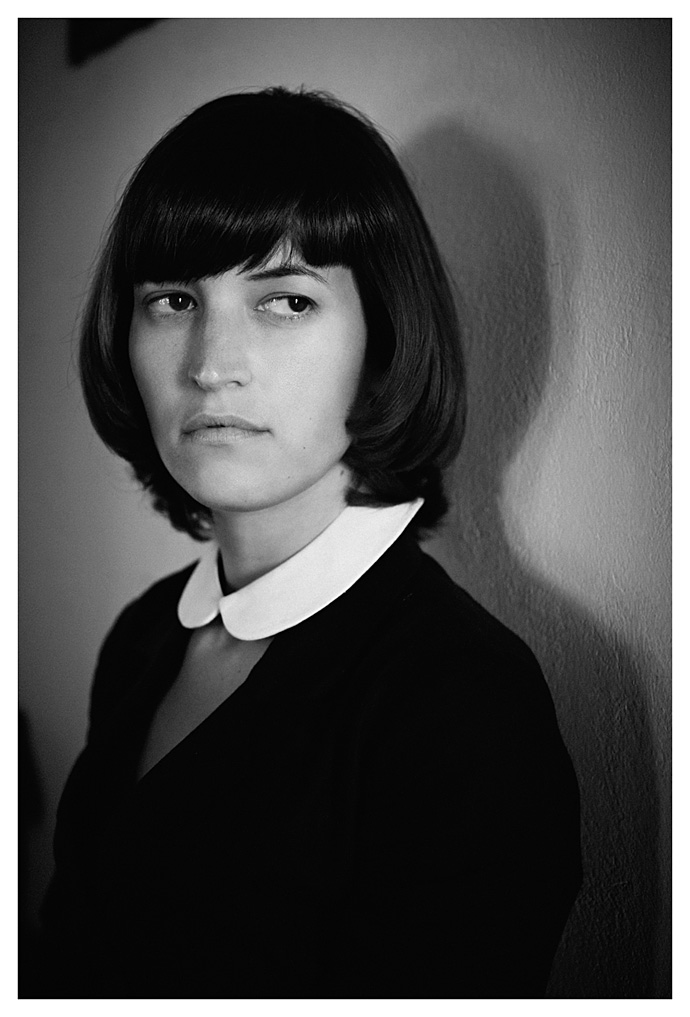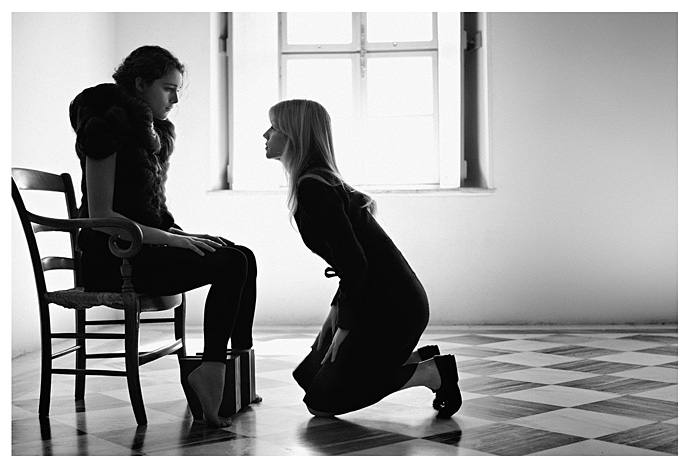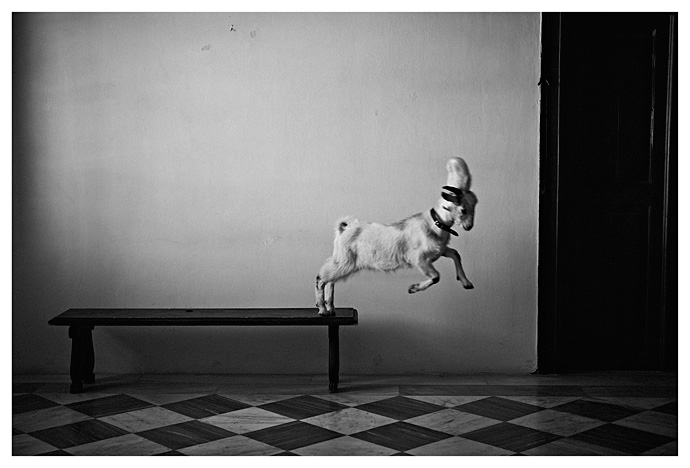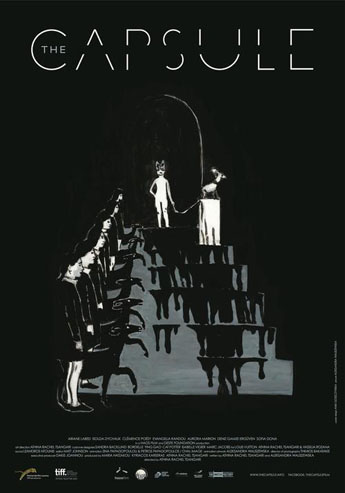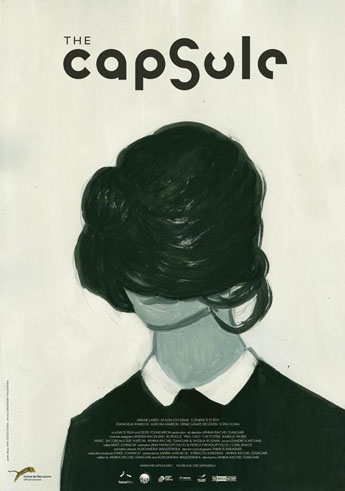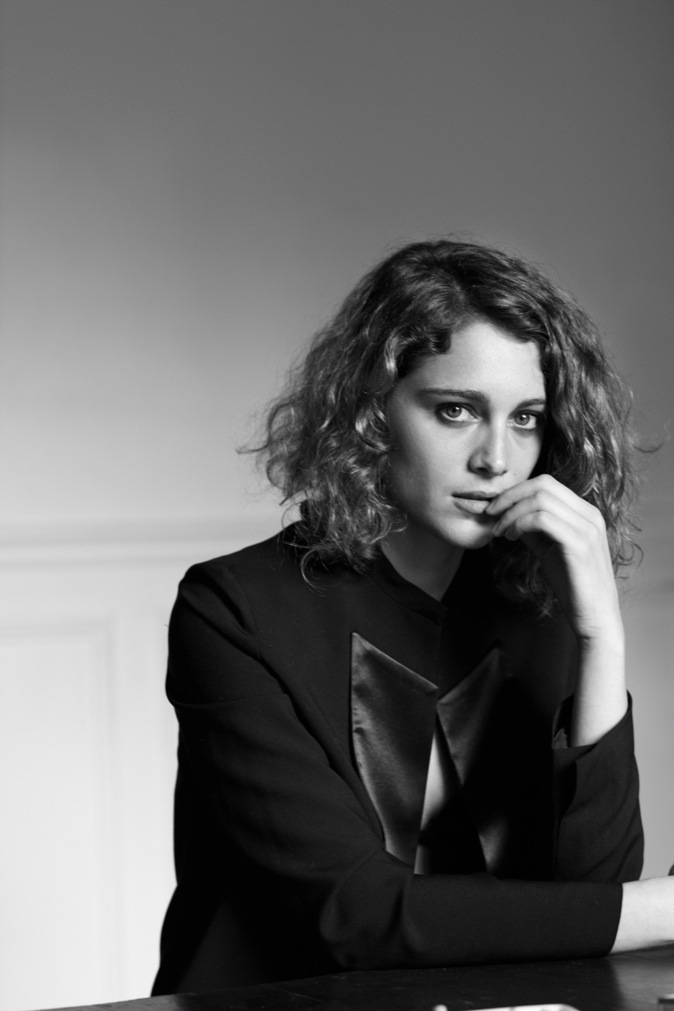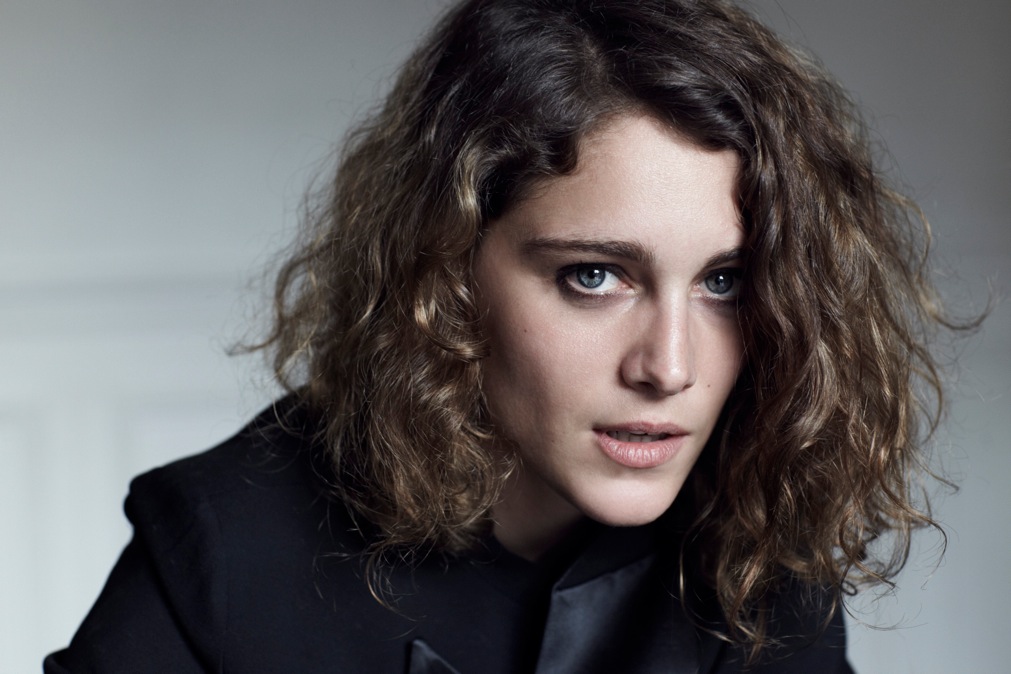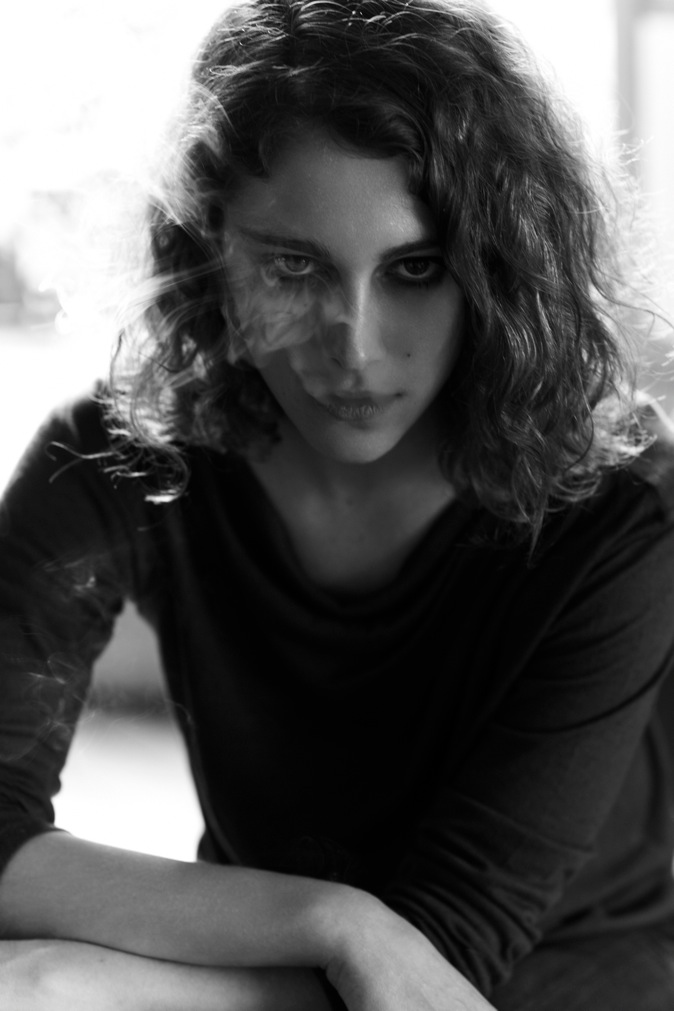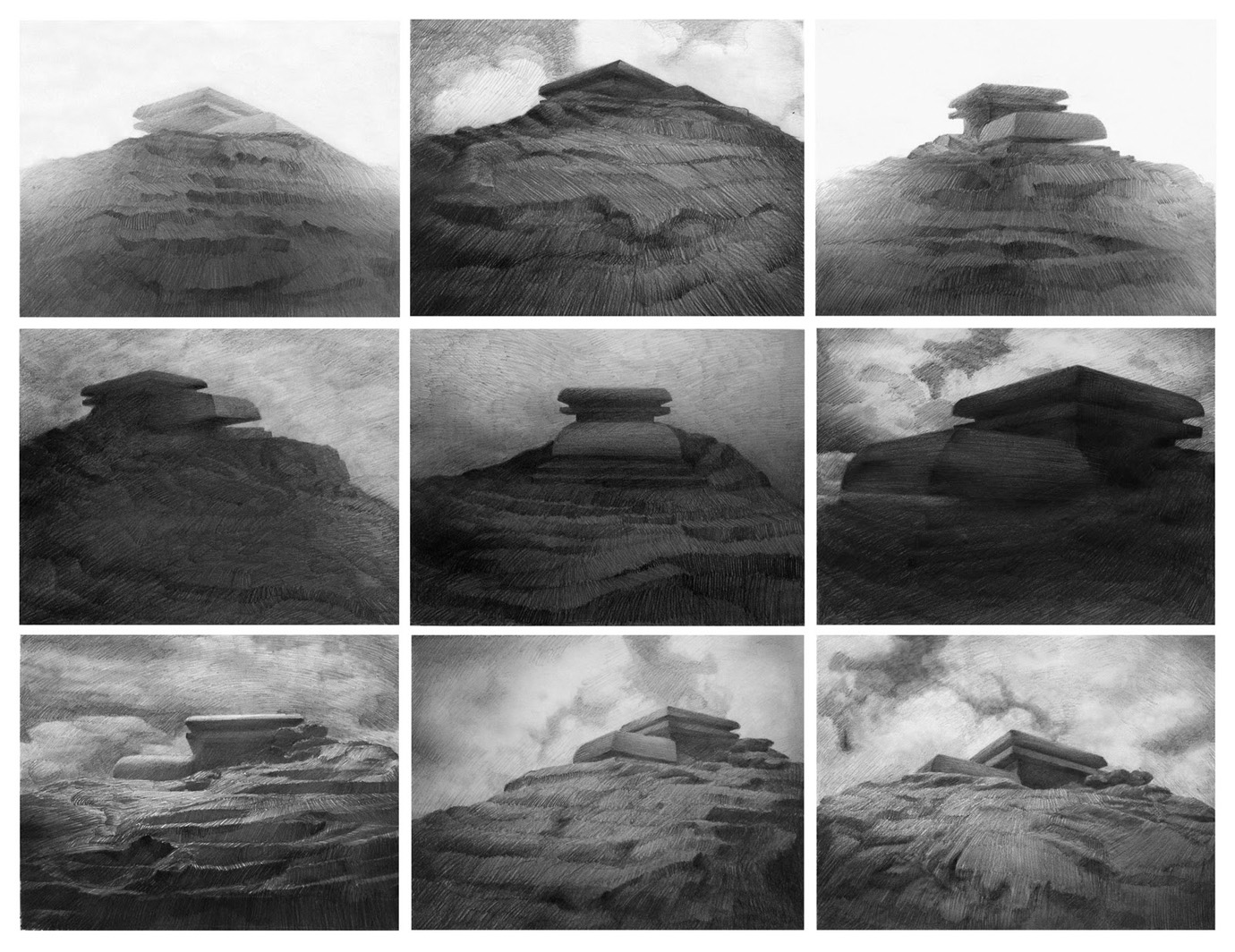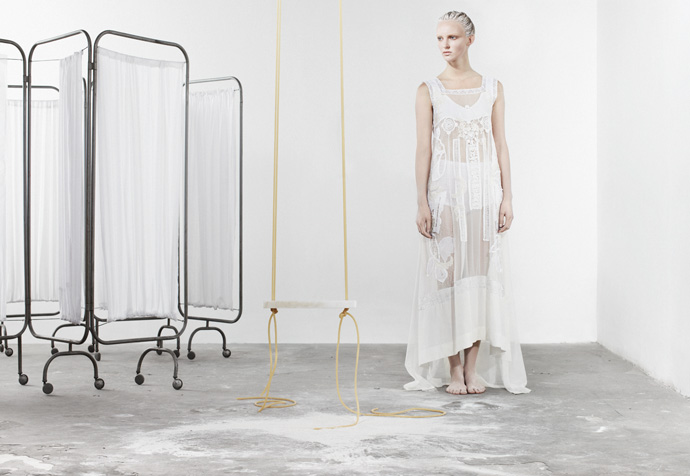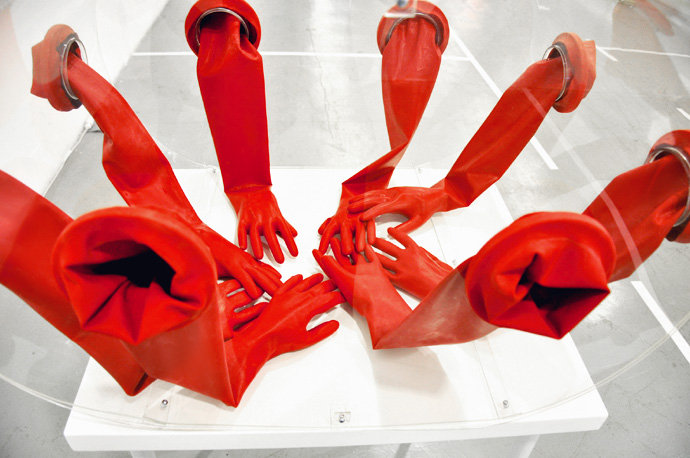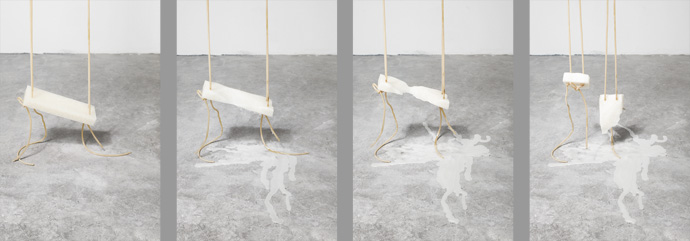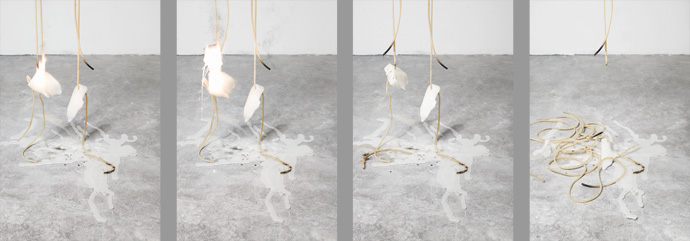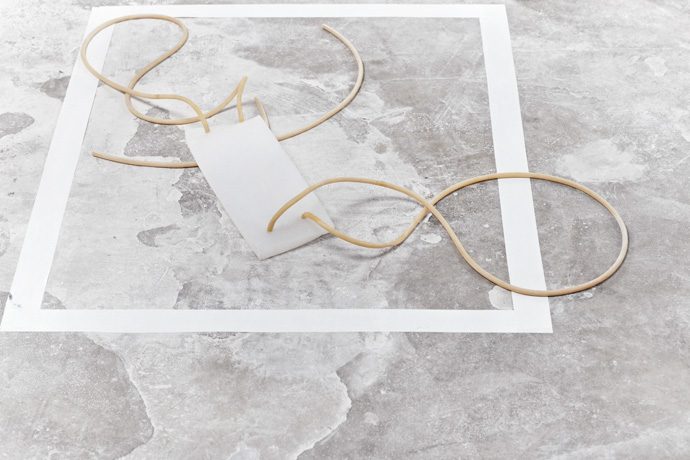-

ariane labed
-She’s French, but she acts in Greek.
ATTENBERG was her first film, but it won her a Lion at Venice in 2010 for Best Actress,
and the admiration of Quentin Tarantino and Sofia Coppola.
She loved the shooting, but hated the fame which followed.Introducing Ariane Labed in
ARIANE
an exclusive film by Justin Anderson,
in collaboration with THE STIMULEYE and Giorgio Armani,
and original pictures by René Habermacher.ARIANE, directed by Justin Anderson. Clothes - Giorgio Armani. Furniture - Armani Casa. Commissioned by THE STIMULEYE.
Antoine Asseraf : Bonjour!
Ariane Labed: Bonjour!
Are you currently in London ?
Yes, finally! I was supposed to move to London last September, but I’ve been moving around nonstop!
Do you often go back to Greece ?
I was in Greece in November to play with my troup VASISTAS, but now I’m more between Paris and London.
When did you first come to Greece, and what was your impression of the country at the time ?
I arrived in Greece 3 years ago, for a 9-month project of my troup with the National Theater of Athens, to put on a Faust.
I was born in Greece, lived there until I was 6, and I think I left part of my childhood there.I dreamt of returning. When I met Argyro Chioti in college, a Greek theater director with whom we created the troup VASISTAS, I jumped onto the opportunity of going.
So instead of 9 months, I stayed for 3 years, meeting Athina [Rachel Tsangari] and Yorgos [Lanthimos] had something to do with hit. Beyond a purely sentimental attachment to this country, I was impressed by all the artists I met and their urgent need to create. Without expectations of getting anything in return, beyond any judgement to which they could be subjected, beyond thinking about breaking even.
If I have just left, it’s only because I need to live in a country where I feel foreign, where I lose myself in the streets. That’s what I’m doing in London. The day where I won’t lose myself anymore, I will leave again.
But I will always return to Greece.
Ariane Labed by René Habermacher.
The films of Yorgos Lanthimos and Athina Rachel Tsangari in which you starred have universal resonance, but we can nevertheless imagine that they come in a context, in reaction to precise things happening in Greek society: the influence of the Orthodox church (the impossibility of cremation), the need to break the myth of Greece as a postcard-perfect location (the desolate landscapes of Attenberg)…
As you said yourself the Greek audience doesn’t really support these films, and when reading the article in THE GUARDIAN regarding New Greek Cinema I found the comments left by the Greeks to be very virulent – do you think the films play a role in questioning Greek society ?
If Greeks have a difficulties situating themselves in films such as Dogtooth or Attenberg, it may be because they carry a truth about their country which hurts.
This young generation carries with them the failure of the previous generation, a generation who thought they offering through a notion of “progress”, and after the military dictatorship, a better life, without taking into account the contradictions of orthodox culture and the desire for revenge after several centuries of hardship when the Greek people were a strange gate to the East.
Being French, I love all these contradictions about Greece, but that is also where the complexity lies, and these are facets which the new generation denies or which the previous cannot accept.
What I also love in Greece is that it’s non-colonial, as luckily they could never afford to be colonial, but it is painful to see and hear the Greek racism against the recent wave of immigration. I think the Greeks are overwhelmed by a lot of things today, and it’s evidently linked to the government which “enjoyed” European aid for decades, including the Olympics of 2004.
Though all this is probably only the beginning of what is slowly happening all over Europe.
ATTENBERG by Rachel Athina Tsangari - Trailer. Best Actress award at 2010 Venice International festival.
The beautiful thing about this chaos is that, these artists, without means, who expect nothing from the government, find the strength to meet and trust each other enought to creat together. That’s the case for HAOS, the production company created by Athina, which led to collaborations with Yorgos Lanthimos on DOGTOOTH and ALPS, and EMBROS, a new squat which just opened and brings together theater, danse, performance, critiques, writers, etc… Greek artists have never collaborated as much as they do today.
Of course the films of Athina [Rachel Tsangrai] and Yorgos [Lanthimos] carry and will continue to be denounced by a society which closes its eyes, much like other Western socities. That may be why they are recognized abroad but considered “weird” and barely tolerated in their home country. The taboos touched upon in Attenberg – death, cremation, incestuous desire, lesbian sexuality, are topics on which one can hardly have a dialog in Greece.
But it is difficult for me to criticize Greece… Beyond the corruption of the government and the misery into which it has dragged the people, which I can intellectually denounce, there remains for me an unspeakable element, a vibration I feel only there. A chaos which I find appeasing.
Ariane Labed by René Habermacher.
How did you live this experience of the “fashion film”, between actress and model, with Justin Anderson ?
I was quite reticent at first… but once I met Justin [Anderson] and he told me the concept, with the slow motion, I became quite excited. In the end it was a beautiful experience.
What are your current projects ? Can you tell me about your play with VASISTAS ?
The big news is that I’m about to shoot a film in France. The first film in my native tongue !
It took quite a while for people to figure out I’m French. My first 2 films, ATTENBERG and ALPS, are both in Greek, so everyone thought I was Greek. It doesn’t bother me at all, but really it’s quite a different exercise to play in a foreign tongue.
Congratulations. Are the plays with VASISTAS also in Greek ?
I’ve worked with my troup for 5 years now. We are 3 women: 1 Greek, 1 Mexican and myself. We met in college at Aix-en-Provence and created a troup. We work in different languages, centering on the body, on the impossibility of communicating with words. We don’t work from existing plays but rather from an editing of texts ranging from Deleuze to advertising… I play in French most of the time, but the text is there to relate to meaninglessness… My work is rather physical.
So it’s your own creations ?
Yes. The last show was called “spectacle” [“show”]. www.vas.eu.com
This impossibility to communicate is also an important theme in Attenberg, your character is very physical but has difficulties communicating with others —did your theater experience push the role in this direction or was it already thought out this way ?
The writing of Attenberg didn’t change much…but it wasn’t written for a foreigner, so maybe inadvertently we pushed this Marina towards another manner of communicating. Certainly, with Athina we didn’t want to approach the character psychologically. There’s always a great deal of physicality in my approach.
Ariane Labed by René Habermacher.
Where does this physicality come from, is it because you’ve practiced ballet, or did you practice ballet because it was in you ?
I did 10 years of classical ballet. I stopped when I was 16 because I could no longer stand the way the body was dealt with. It’s a strange contradiction, I was and remain persuaded that ballet is a sublime and fair form of expression, but I can’t deal with the instrumentalised body. In ALPS, I play the role of a competitive gymnast, it was a superb challenge to have to return to this physical condition, and yet a real nightmare !
So you keep this tension within you, between the habits of ballet, the need to express yourself physically, and the rejection of the classical dance system….
Yes, something like that.
When we spoke for the first time by email over a year ago, I wasn’t aware that you were at the time going through a “reaction”.
Reaction?
Reaction, or crisis, ou questioning ?
Was it the reaction to cinema ? to the success of Attenberg ? or to the rigors of a gymnast’s discipline ?
Yes, it was shortly after my award in Venice… I was lost. I did not know how to deal with anything — I didn’t expect and wasn’t prepared for such a level of display. I locked myself into work (the preparation of the role in ALPS) and fled the journalists. It took me a long time to realise that it could be a gift in my life.
That’s when I decided to get an agent in Paris to continue film-making. When I made Attenberg, I didn’t think I had a place on a screen. I’d loved the shooting, but I couldn’t picture myself fitting in. This award led me to hope I could continue, and now I only dream of shooting again.
Before Attenberg, was there something you found repulsive in cinema, or was it an attachment to the physicality of theater ?
I didn’t think you could find the intensity you have in front of the public. That moment when you lose the notion of time.
And paradoxically what troubled you after Attenberg was the intensity of the public scrutiny !
Being exposed in a work of art has nothing to do with being exposed as yourself holding a world cup trophy.
I can be naked, raw, give myself completely for a scene or a film, but to expose myself as Ariane Labed in the press is something I find completely uninteresting.
ALPS by Yorgos Lanthimos - trailer. Best Screenplay at 2011 Venice International festival.
So it’s rather the status of the “star” that troubles you rather than shooting itself ?
Shooting is sublime. But I’m not sure of what the actress’ status is. I don’t think there’s a rule. It’s a crazy job, and I hope you can go about it your own way. At least that’s what I’m trying to do.
You returned to Venice for ALPS, which won the prize for Best Scenario, how was it this time ?
It was a holiday ! I took a lot of pleasure, and I was very happy for Yorgos Lanthimos and Efthimis Filipou [the writers].
Let’s quickly talk about ALPS – when does the film come out ?
In France I’m not sure, but in the UK in the Spring.
How was this second film for you ?
I was afraid. After the success of Attenberg, I put a lot of pressure on myself… I was telling myself again that maybe Tarantino was wrong, maybe I shouldn’t be on screens anymore….but it helped me to work even more. It was a small role in ALPS, but which required 3 months of intense preparation, so I tried to make the most of shooting days and give my best. It was a very different experience. Yorgos doesn’t work like Athina at all, he leaves the actors with a lot of doubt, and captures everything that slips through.
-

new greek cinema: of WASTED YOUTH and “an old whore in need of love”
-These days we hear mostly troubling news from a country to which its citizens proudly refer to as “the birthplace of democracy”: Greece. Another spiral of economic turmoil unfolding in slow motion casts a spell upon Europe. And yet accelerated by the recent events, a very different wave reaches us from this troubled country: “The weird wave of Greek Cinema” as The Guardian’s Steve Rose titles. The Stimuleye talks to WASTED YOUTHS director Argyris Papadimitropoulos.
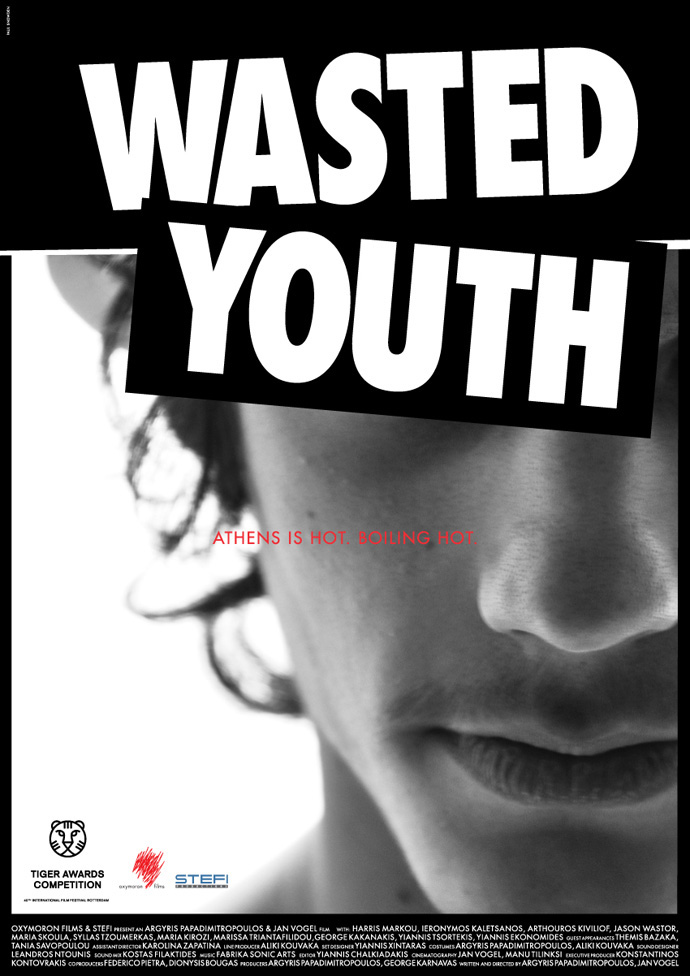 Poster for WASTED YOUTH
Poster for WASTED YOUTHIt’s the late days of summer 2011. A handful of Athenians, foreigners and expats mingle on Antiparos, a small island in the wide open of the blue Aegean. Athens is far and its troublesome agenda on a halt.
As the night falls scenting the breeze with jasmine, the open air cinema Oliaros, a local institution, announces tonight’s screening with notices on poles and walls: WASTED YOUTH, the film that earlier this year had opened Rotterdams Film Festival. The film’s director, Argyris Papadimitropoulos, hands stickers to the arriving guests: WASTED, MALAKA (wanker), YOUTH, LOVE….The film is set during a hot summer day in Athens. Much like the city itself, exhausted, confused, unable to make any progress, brimming with desperation and aggression, there is Vasilis, a middle-aged man struggling with the mounting stress to cater his family. On the other side Harry, a sixteen-year-old skater. He and his friends are amusing themselves and wasting time away. Their lives intersect in a contemporary portrait of the city of Athens and a society in crisis.
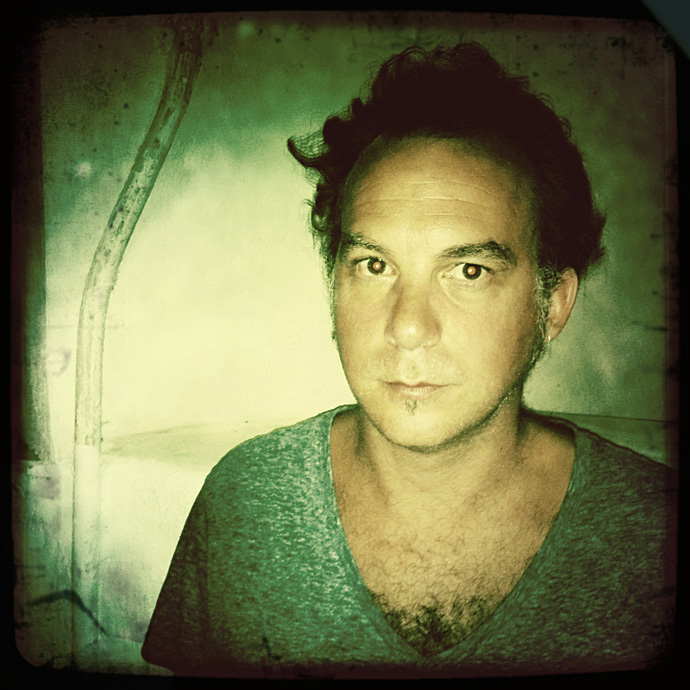
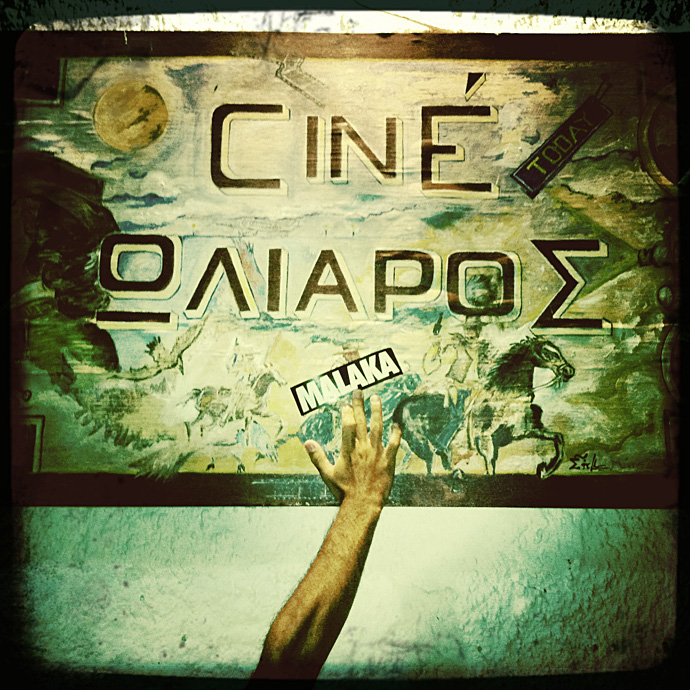 Left: director Argyris Papadimitropoulos at Antiparos and right: Poster of cinema Oliaros with MALAKA sticker
Left: director Argyris Papadimitropoulos at Antiparos and right: Poster of cinema Oliaros with MALAKA stickerRENÉ HABERMACHER: How did that screening at the open air cinema come together?
ARGYRIS PAPADIMITROPOULOS: I am a regular there so I know the guys of Oliaros cinema since… forever. They asked me to do a screening and although I was not allowed to do so by my distributors – In Greece films are supposed to have two runs since we have this open air cinema tradition still alive and very popular – I couldn’t say no. I just love this tiny cinema, and the fact that it is free for everybody to watch the films. There are Greek islands much bigger in population who do not have a cinema and that’s sad.
There’s such a huge part of me and my adolescence in WASTED YOUTH that in every screening I still feel kind of weird… weird in a good way. Since I re-lived my teenage years by shooting this film I feel so exposed. It’s strange telling unknown people so many things about myself. But that’s the magic of it, isn’t it?
WASTED YOUTH had its world premiere in Rotterdam Film Festival in January 2011 and was also honoured to be the opening film. Since then it was screened in more than 30 festivals around the world. In some of the best actually. It was a great year, I spent much of it traveling and presenting the film.
We signed with Elephant Eye Films in New York to represent WASTED YOUTH for world sales. For such a tiny budget film I can loudly say: we did great.Trailer of WASTED YOUTH
R: How was the film generally received by the international audience?
A: I’m more than happy with the comments audience and critics wrote about it.
Screen International described it as “lush, evocative and impressively shot” (laughs).By its career you can tell that the film was received excellent. The audience loved it and the few that hated it, were the ones that gave me the chance to talk, start a discussion, which back in the beginning was the main intention for the film.
I was with my friend and co-author Jan Vogel and we were saying that we need to make a film about these crazy days we are going through and that we need to do it NOW. Some films are made with a sense of urgency. We actually didn’t spent any time writing scripts or searching for funding, but found our amateur teen guys and a couple of good actors and started improvising on a few pages, something like a synopsis. WASTED YOUTH was privately funded by friends and is what you would call 100% indie.R: So it was pretty much a “hit and run”?
A: It was a hit and run urban guerilla thing but shot on film (!), not digital.
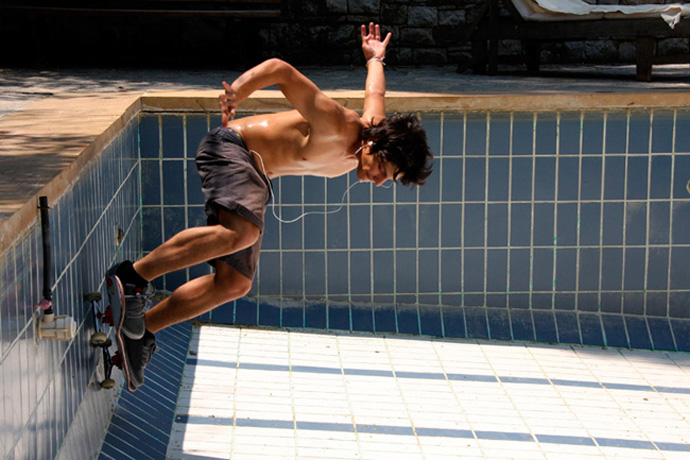 Over the edge: Still from the movie WASTED YOUTH: Harry (Harris Markou) skates in the empty pool of his parents friend.
Over the edge: Still from the movie WASTED YOUTH: Harry (Harris Markou) skates in the empty pool of his parents friend.R: I really liked the scene in the very beginning when the boy wakes up in the morning, somewhere in this modernist building…. that whole sequence to the skating in the empty pool felt really strong… like frozen time.
A: That was our intention. We wanted to go through all the different people, classes etc in the modern greek society.
So the kid wakes up in a house of a lady with what we call “old money” and starts his day under the surface of the earth.
We wanted to have our little symbolisms without making a mind-fuck film.
There a second levels, second readings etc but only for those who want to read them.
I hate the films that are so personal that you will not get them unless you are the person itself (laughs).
I love stories.
I hate smart ass films.R: In my eyes your film looked very authentic- which is quite difficult to achieve.
A: Glad to hear! That was what we wanted to do: a spontaneous film!
R: In a way it also gives a beautiful portrait of the city. How do you like Athens?
A: I love Athens. It’s the place that i was born and I know it as the back of my hand. Athens is a character itself in the film. Its chaotic , crazy and sadly neglected.
It’s the old whore that people love to hate but they love paying a visit. Athens needs a bit of love from the people that fuck her everyday.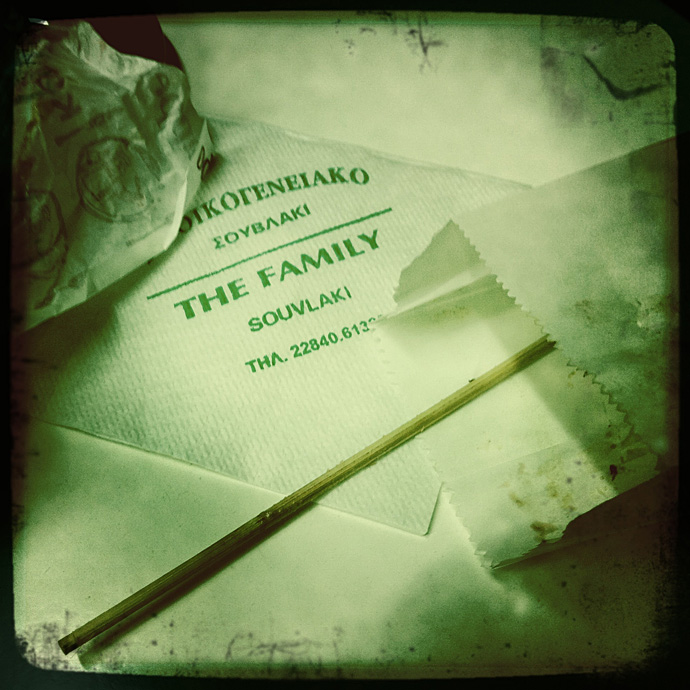
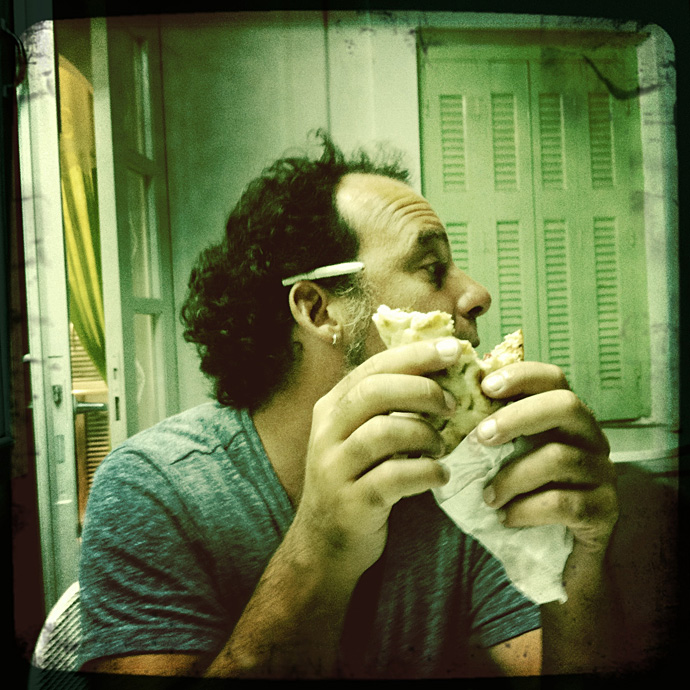 Argyris getting down with more from the spit
Argyris getting down with more from the spitSPOILER ALERT(for the affectionate reader who has not seen the film yet, please skip this part)
R: I was quite surprised at the end when the final “shot” was triggered by the other police man
A: by that I wanted to say that anybody would have done it.
I wouldn’t like the audience to leave the screening and feel sorry about a killer,
since the cops carry guns one day they will trigger them.R: Thats why you left him blank? as a character
A: True, if by blank you mean what I mean.
END SPOILER ALERT
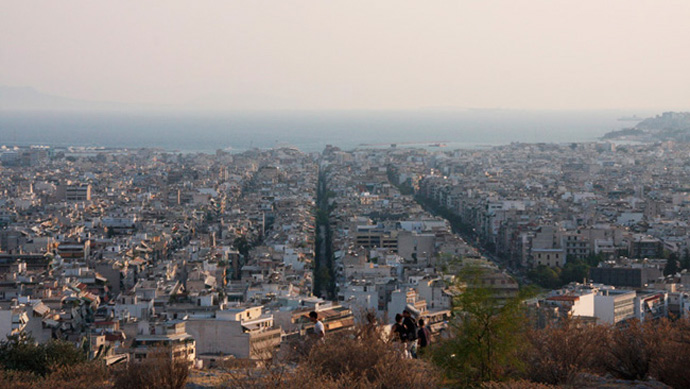 Still from WASTED YOUTH: Athens
Still from WASTED YOUTH: AthensR: The Guardian wrote an article on what they call the “weird wave of Greek cinema”…
A: the fact that the Guardian ran a huge piece on Greek films is already impressive.
A few years back they wouldn’t spend ink on this. That means that there’s something great being born here. I wouldn’t call it a wave and wouldn’t rush to give it names but you can smell something good is going on. There’s no surprise anymore when you see a Greek film in the list of a great festival.
Berlin, Rotterdam, Cannes, Locarno, Venice, Sundance, you name it.
Critisism is there and will always be, there are some people that are sceptical about whatever new is going on and others that want to kill it before it even gets born.
People are not ready for changes, you know.It seems like when societies are on the edge, edgy things come out of their arts. Remember Argentina, Romania and so on.
What was happening in Greece the last 25 years, let’s say from the early 80’s till the olympics was a fake paradise:
a fake prosperity with fake money, fake happyness, fake tits, fake, fake, fake …A fake new identity that never made it to the core of neither our souls nor our society – it collapsed in a few days.
One day they told people we are in crisis and people believed it the same day, so there were no solid foundations in this “new order” that was fakely established.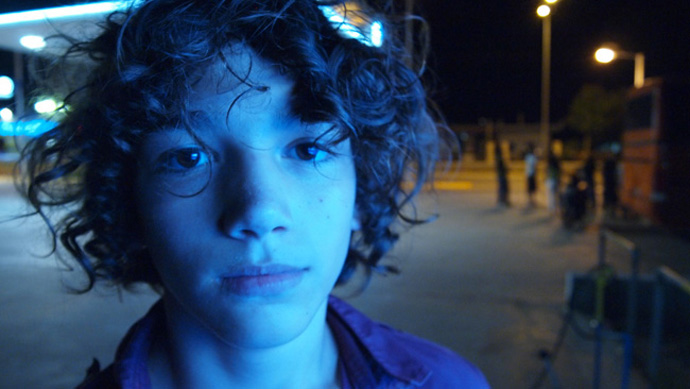 Still from WASTED YOUTH
Still from WASTED YOUTHR: To come back to one of the most interesting things about the article of the Guardian, it were the comments by fellow Greeks being often malevolent, accusing the directors of plagiarism in the case of Dogtooth, or calling the films “a product of mental health problems”.
A: hahaha! that’s great fun.
People cannot accept themselves. When somebody puts a mirror in front of them they can’t cope.
A product of “mental health problems” is the society we use to live in, so are the films as they are suppose to reflect the society.
As for the plagiarism: I would just say that there were very few people saying so, but they created a huge buzz. These people are the ones that do not like the success of someone else because they are stuck in their thing.The greatest festivals in the world are not stupid to have a work of plagiarism in their catalogue.
Also, plagiarism in art is a huge topic that it is almost impossible to discuss: almost every great artist was accused of that!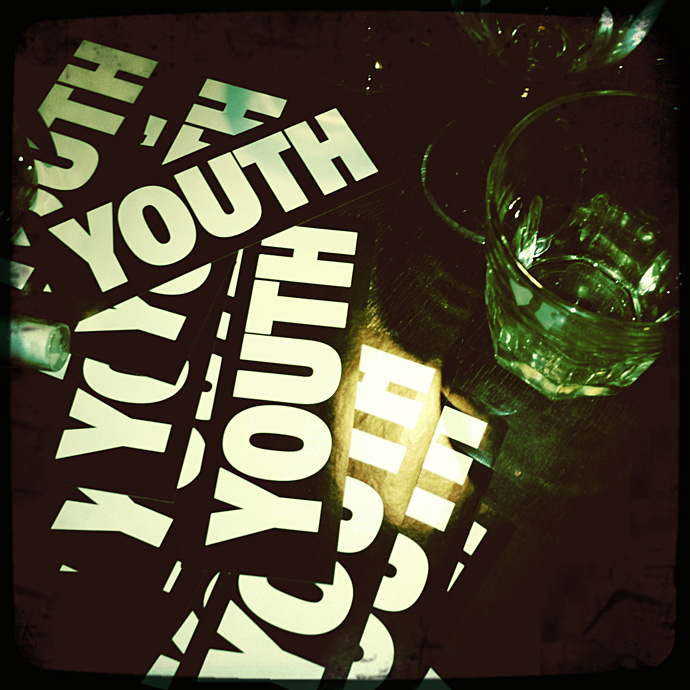
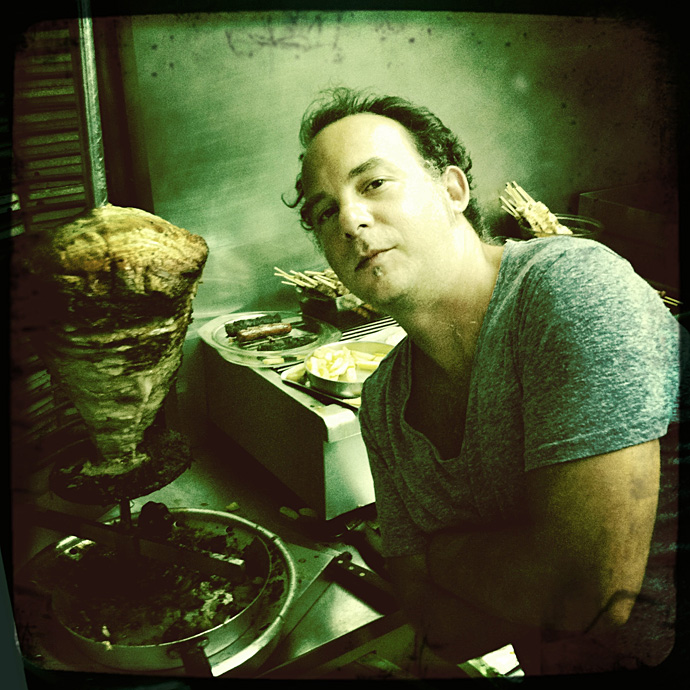 Argyris at his favorite souvlaki place in Antiparos.
Argyris at his favorite souvlaki place in Antiparos.R: I thought this was a very typical reaction. In a recent article for Vanity Fair Michael Lewis puts it like that:
Individual Greeks are delightful: funny, warm, smart, and good company. I left two dozen interviews saying to myself, “What great people!” They do not share the sentiment about one another: the hardest thing to do in Greece is to get one Greek to compliment another behind his back. No success of any kind is regarded without suspicion.A: I wouldn’t agree. If you look at the end credit of all this films that made it to the great festivals the last few years, you will realise that everybody helped on each others work. Greeks are easy target to be accused for almost anything since we have this fucked up temper. But on the other hand you can tell that there is still solidarity and support between most of my fellow greek film makers for example.
R: What are you working on next?
A: I write a couple of scripts with friends. Things are hard these days but we’ll keep trying.
I would like every film I make to be so much different from the other. I would also love to make a film abroad, although I love Athens.
Paris, London, Berlin, New York, Rio, Buenos Aires – there are stories everywhere that i would love to tell…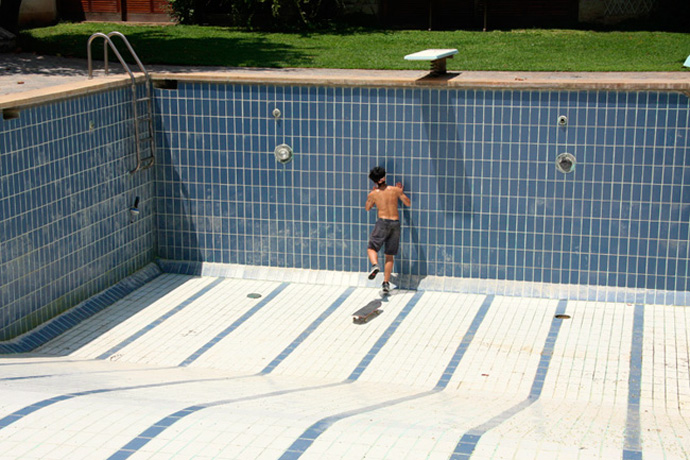 Still from the movie WASTED YOUTH: Harry (Harris Markou)
Still from the movie WASTED YOUTH: Harry (Harris Markou) -

PANDELIS CHANDRIS: “Man is an island”
-Insightful, rigorous and critical but warm interlocutor,
Pantelis Chandris, the awarded artist by the Association of Art Critics Hellas, talks about his “Island”, the dead ends and the pleasures of life with the tastes for cooking, to fellow artist Efi Spyrou, in Athens.Pantelis Chandris "180⁰", 2010. Pencil on paper. 15x20cm each
EFI SPYROU: Artist “based in Athens.” What does this means
to you?
PANTELIS CHANDRIS: “Based in Athens”, means nothing. You are considered out of the larger map, out of the game.
Those who live and work in Athens live and work in a purely regional locality. Artists who live and work in London, New York, Berlin have a more extended target audience andthese are cities where things happen.What do you do against this reality?
While I am working on my art projects, I make my living as a professor in the Athens School of Fine Arts.Are you teaching what you are working on?
No. It would be tragic to teach what I am working on. To work, means trying to find a way tocreate something. Exploring a personal issue. Besides, the allurement of teaching has to do with the process of dealing with the impasses of others. (more…) -

dimitris papaioannou : the wandering kouros
-THE WANDERING KOUROS
In the last part of our conversation Dimitris Papaioannou speaks about his current project INSIDE that premieres in April at the Pallas Thatre in Athens
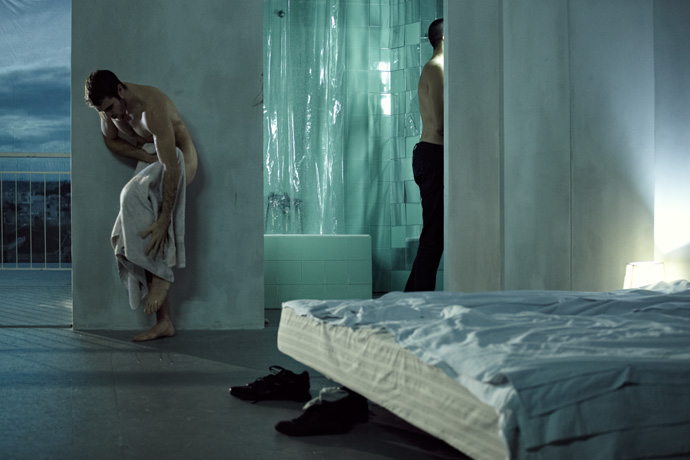 Scene from INSIDE by Dimitris Papaioannou. Photo by René Habermacher
Scene from INSIDE by Dimitris Papaioannou. Photo by René Habermacher
RENE HABERMACHER: Let’s speak a little about your new play: INSIDE.DIMITRIS PAPAIOANNOU: INSIDE is a work born where two situations come together. The first is a show that runs endlessly without beginning, middle or end. The second is a situation in which audiences are allowed to visit at any time they like, sit wherever like, and are free to leave and return as many times as they like. The theatre doors open at 17:30 and close at 23:30. The stage action begins before you come in, and continues after you leave. Nobody sees a beginning, or an end. The play recycles itself, but never repeats itself.
We are playing with the concept of empty time. INSIDE focuses on personal time, that series of moments we experience when we return home. In a way it monumentalises these moments: the very fact of eating, or the very fact of showering, or the very fact of undressing to go to sleep. And without any assistance from civilisation — without a book, a magazine, radio or television.
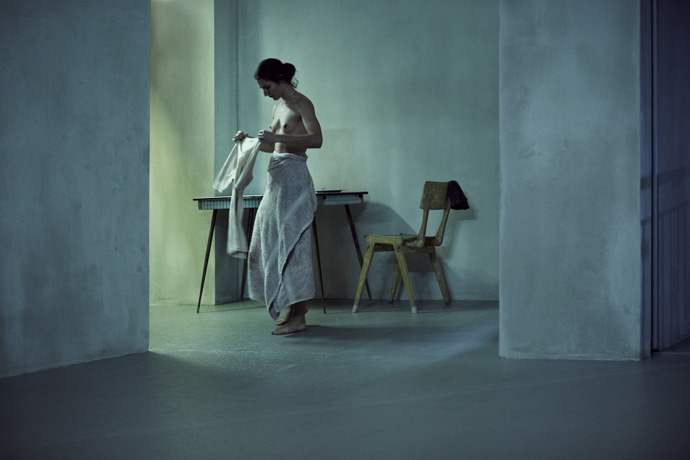
Scene from INSIDE by Dimitris Papaioannou. Photo by René HabermacherWhat you see is a composition, a series of everyday private movements and actions that are exactly the same, repeated multiple times by 30 performers in various overlapping and recycled versions. These phrases come together, then one remains, then another five come into play. It’s about density and overlapping forms. An ongoing open composition that encourages audiences to create their own compositions, depending on how many times, how long and from which angle they choose to see the play.
This is an idea that intrigues me, that people in the centre of the city will visit a theatre to watch others doing things that they do themselves, and the people they watch are themselves watching the city through the window. This is something I feel is charming.
It is these two elements — that of the city documentary exploring a place common to all, and the freedom given to audiences as to how they can view the work — that come together in my view to create this project. The subject of it is one level, the form of it is another, and both are conceived at the same time. This is what interests me, and this is why I am doing it.
So this is what INSIDE is.
I don’t know what people are going to do and how audiences will make use of this game that I am proposing. It’s something of an experiment, we’ll see how it’ll work.
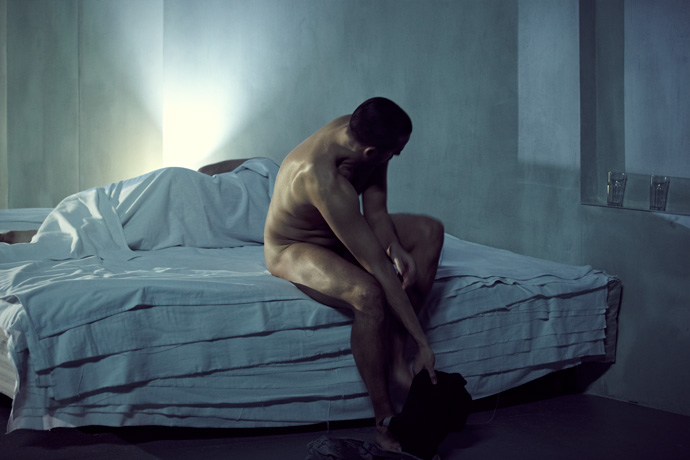
Scene from INSIDE by Dimitris Papaioannou. Photo by René HabermacherIt reminds me of the photographs of Eadweard Muybridge for example, or the performances of Marina Abramović.
Abramović has these elements of patience, and of exhausting the human body. She has done one performance [“The House with the Ocean View”, 2002] where she actually lived in a gallery, in public view, which resembles what I am doing. But my work is not performance art, it requires rehearsal and it will repeat itself everyday; it’s not like an algorithm that evolves organically in front of our eyes. That’s why we are doing it in a theatre and not in a museum or gallery, because it is a kind of a twisted version of a performance, but not performance art. It is something that is rehearsed, that has an acting tone, and is not personal like most performance art, which is about a specific person doing something in that moment. Of course, this experiment of mine would not have been possible if performance art had never existed.
INSIDE reminds you of Muybridge because it gives you the chance to see and imprint in your head the successive stages of a movement, just like Muybridge did in his photographs. They also share the element of observing people: how people move, how they walk.
It’s like filming a documentary in the savannah: you film for hours following a lion and then you have 15 minutes where the lion sits doing nothing. We are taking these 15 minutes of footage of the lion making slight movements and superimposing it many times, through shifts in the timing, to create an entire play out of it. It is still the lion. It’s still about observing the lion. The lion does nothing new. But hopefully we will be magnetised by these successive of layers of the same action taking place, and start meditating upon our own lives.
That was a good example! We are becoming very abstract and intellectual now.
I can’t help it!
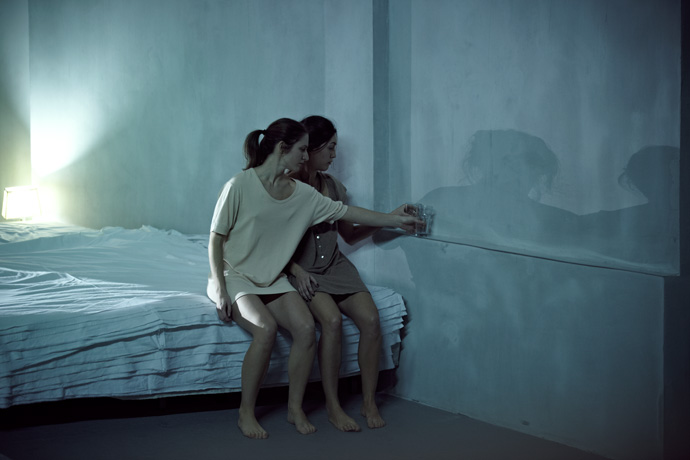
Scene from INSIDE by Dimitris Papaioannou. Photo by René HabermacherI understand that this idea for INSIDE has been in your head for quite a while now.
It was the first thing that came into my head after 2004, the first thing I wanted to do and found worth doing. Back then I had the idea of this room, and of creating a composition from a single simple series of movements by multiplying and superimposing it. Within the framework of a two-hour show, this seemed ridiculous — this limitation would have strangled the idea, forcing the whole thing to have a conclusion, a climax, a very specific story to tell. It would also seem like a joke to audiences, setting them up for something with a beginning, middle and end and then presenting them this thing repeating itself and multiplying, waxing and waning before their eyes, without giving them the chance to leave whenever they want. So I didn’t do it.
Last year, I made the leap in relation to the way the theatre itself could function: I could create a very long show and give people the freedom to come and go as they please. I had to deal with the logistics of the thing, but then suddenly a form was created in which this content could take place. Because once you liberate the audience from having to see it all, then you also liberate the show itself to develop in ways that do not necessarily lead to a defined conclusion. So that is why it is happening now, because it took me some time to conceive the framework within which this could function.
Official trailer for INSIDE.
There are some recurrent elements that I always see on your mood boards, in your work, in your references, and last week I saw a key element once again: the kouros.
Yes!
That one always returns, either standing or fallen.
I deeply apologise, I cannot help it! Some things come back again and again, you know, until everybody will just be exhausted by it and nobody will ever visit anything I do ever again!
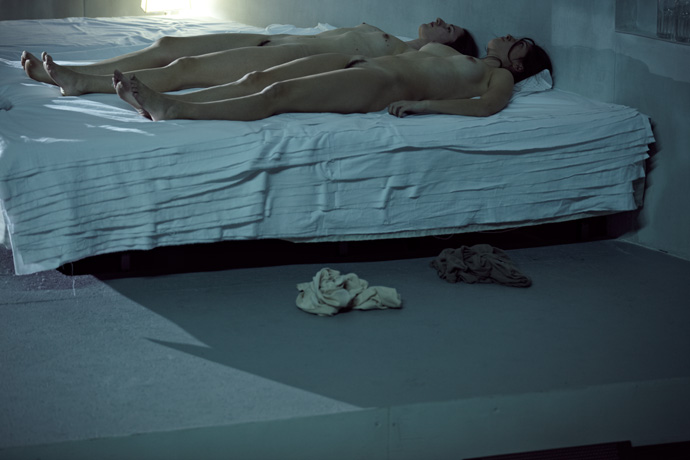
Scene from INSIDE by Dimitris Papaioannou. Photo by René HabermacherWould you say you have an obsession with what the kouros represents: beauty, nobility, youth?
It’s not about youth. It just happens that I work with people who are quite young. I’ve never flinched from the idea of worshipping the structure of a human body: I like the body. I like looking at human bodies. There is something about beauty that charms me and puzzles me and magnetises me.
I have a certain understanding of the human presence, of the human body situated in space and against the vastness of the sky of existence. I usually have people looking at landscapes. I think in every play I’ve done, I’ve had someone looking at something. This is something that maybe comes from me: I tend to breathe things in by looking at them.
When the kouros came to ancient Greece from ancient Egypt, it took one giant step forward: extracted from his background, the axis of his body shifted over his two feet. So for the first time in history, there was a life-size sculpted human figure that could be seen from all sides. And this coincides in ancient Greek history with the dawn of poetry, of lyrical poetry, where people started to talk about how they feel. For me, the kouros is more than a celebration of youth and beauty. I think its more the celebration of wandering. A figure standing on earth, wondering about its own position in space. Wandering in space: where do we stand, where are we? You know, it’s a common puzzle for us humans, and it attracts me. My work reflects that I guess.
Is that enough, dear? Do you want more?! [laughs]
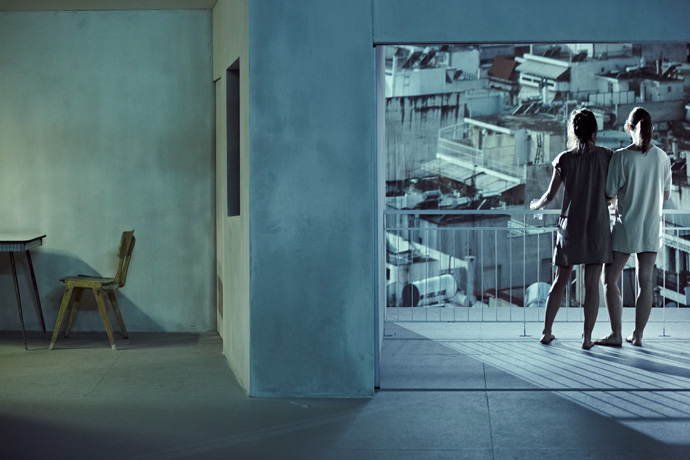
Scene from INSIDE by Dimitris Papaioannou. Photo by René Habermacher -

Efi Spyrou “swings”
-Cypriot Artist Efi Spyrou “swings” to our attention with the latest issue of Pop magazine SS 2011.
Efi Spyrou’s artistic reflection is interdisciplinary, her art on the conjunction of corporality and art theory. Often her approach, as manifested through her pieces and installations, seems cold and industrial. Yet it is charged with personal memories associating emotional moments. Remarkably enough, Efi operates with inhibiting elements of isolation, institutionalisation and discipline to achieve her purpose: ignite an emotional spark.
Efi Spyrou: Swing (1), 2010 marble, latex; 285 x 30 x 15cm. Photo by René Habermacher for PoP magazine SS 2011. Model: Ymre Stimkema.
This Issue of Pop magazine features a group of 5 contemporary artists: Gillian Wearing, Meredith Sparks, Linda Sterling, Clunie Reid and Efi Spyrou, Juxtaposing pieces of her SWING series with fashion by Antonio Marras, her work for this collaboration oscillates around the idea of “lost innocence”.
At this Chapter of her Life, Efi Spyrou contemplates inwards, both on personal and collective memory – after being in the spotlight as a fashion model, presenter and public figure that stood for the right cause:
She was involved in Campaigns of public interest as against eating disorders, “Fashion Targets Breast Cancer” and the UNHCR-the UN refugee Agencies ‘Against Women Trafficking’ and was subsequently awarded with the Cyprus “Leader of the Year in Advertisement”.
THE STIMULEYE finds Efi Spyrou in Athens, her hometown of choice for a conversation on her most recent projects,
including her first solo exhibition at Six D.O.G.S in Athens. The exhibition will run from May 6 2011.Efi Spyrou: Untitled, 2010, latex, iron, plexiglas, wood; 85 x 65 x 120
EFI SPYROU: Hi Rene! Here I am!
RENE HABERMACHER: hey hey- just saw you! welcome!!!!!
I think now it’s a good time for our conversation! Shall we?
In your work we find often references to childhood, as in your most recent SWING series, but as well for example in “Untitled” 2010 (incubator). What is the relation to yourself?
Each detail, each piece reflected on my work is connected to my memories, my experiences especially in my early ages. Sometimes I feel I was literally thrown from childhood to adulthood in an instant moment… There is an inner need to go back again and start from scratch, with a different pace.
How did you grow up?
In a very disciplined way…
I grew up in a very small, conservative, strict, disciplined community where freedom of speech was not something really known… After my 18th birthday, when I decided to leave my homeland Cyprus, I was catapulted into the wild world of which I knew nothing about! And first of all, I knew nothing about rapacity…I was 18 years but I had the feeling to be in fact much, much younger and very scared.
Following your journey had taken you quite somewhere else- in terms of location and orientation. You returned only much later to your point of departure, with your art and the themes your current work embraces.
After 17 years I am in the position to say that this journey was difficult but full of colours, aromas and sounds, the voices of different cultures, people, moments. You see, I have entered the fashion world as a model and subsequently public figure, which gave me the chance to travel a lot all over the world. Although I had great moments, and I do feel lucky about it – I had to test my limits, my values and myself in many ways: In this race the cost was not insignificant. That is why there was a turning point, of explosion, – I had to slow down – and turn the time back, back to my roots and see which were the remains! This is where art gave me the tools to deal with all this material I had in my hands…
Efi Spyrou: Swing (2), 2010, silicone, latex; 75 x 30 x 15cm. Photo by René Habermacher for PoP magazine SS 2011. Model: Ymre Stimkema.
When we met last time in London to do our project for POP, we were focusing on your most recent work, the SWING. In fact it was a juxtaposition of your art with the fashion by Antonio Marras, under the helm of Isabelle Kountoure. It seemed like another circle had closed: with this new pieces that reflect on lost innocence and the interweaving with fashion that had marked another phase of your life.
This was a liberating experience for me. Every time I find the medium to make a conclusion of my contradicting “memory voices”… is an exciting moment. With the series of my works SWING, I had the chance to cooperate with a great team, working on the upside of fashion. And in parallel I had the chance to give light to a darker “space” as you say, “our lost innocence”. This is the only way for me to survive- to accept my bipolarity…
You started with the first piece of your “swing”series in marble. For this project you took cooperations with other people in account – thus creating more facets around the actual object…
The first piece was more an inner conversation. The development of the piece[s] through this cooperation was a conversation with others! This is really important for me, because I do believe that our personal “spaces” from a different perspective are collective “spaces”. The former is the reflection of the latter and vice versa!
In art, the material plays a significant role in the interpretation of the piece.
During our collaborative working process i’ve developed other variants of the original swing: wax, silicone, plaster and mirror. Doing so, I leave an open interpretation of my recent Swings”. What matters to me, is not to give a solution to a problem, but to actually “spark off” something…Swing (3), 2010 by Efi Spyrou: paraffin wax, latex; 335 x 30 x 15cm. Photo by René Habermacher for PoP magazine SS 2011.
As you operate not only plenty with personal memories, but integrate the collective as well – in this context, how important is Athens, or Greece as a background for your work?
For my own work I incorporate a universal, collective memory in my pieces – at least this is what I am trying to do. Sometimes it could be characterised more “western”… but not surely Greek or Cypriot. I can assure you though that my life in Athens and especially the “new” way I look at the city and its everyday life here, gives birth to a lot of new ideas + questions + art pieces!
Spring, especially these days, is so refreshing! I cannot think of economic crisis – I keep my worries silent for the moment.
As far as concerning the emerging art scene over here: I think there is a lot to be done, in order to consider Athens as part of the greater art map. But I see a young art generation which is very promising…What are you working on right now and next?
I am preparing a solo exhibition in May. The show will be running from May 6th at the Six D.O.G.S exhibition space in Athens. Included on display are among new works some ready pieces that are already known.
For the moment I am studying the relationship of memory with the game of lights and shades in space. I am working on sketches right now, may be for an installation, we will see…
I would love to have the chance for more collective dialogues in the future.Efi Spyrou: Swing (2), 2010, silicone, latex; 75 x 30 x 15cm. Photo by René Habermacher for PoP magazine SS 2011.
Thank you so much for this insightful talk!
Shall I say sweet dreams?
Efi Spirou’s solo exhibition at Six D.O.G.S, 6-8 Avramiotou Street, 10551, Athens, Greece
The exhibition will run from May 6 2011.a collaboration EFI SPYROU | ANTONIO MARRAS pop Magazine SS 2011
Hair Panos Papandrianos at CLM using Bumble and bumble
Make-up Yannis Siskos at Effex using Giorgio Armani Cosmetics
Model Ymre Stiekema at Viva London
Casting Angus Munro at AM Casting, Streeters NY
Set Design Emily Pugh
Photography Assistance & Digital Technician Laurent Dubin
Fashion Assistance Tui Lin
Hair Assistance Angel Sayers
Digital Remastering Dimitri Rigas at Dimitri.jp
Shot at The Russian Club Studios -

dimitris papaioannou : spatial and human relationships
-SPATIAL AND HUMAN RELATIONSHIPS
Continuing the conversation with Greek choreographer Dimitris Papaioannou, this second part concentrates on his post olympic work as MEDEA2 and the influences of butoh and his native Athens in his work.
 Scene from MEDEA2 by Dimitris Papaioannou. Photo by René Habermacher
Scene from MEDEA2 by Dimitris Papaioannou. Photo by René HabermacherRENÉ HABERMACHER: Over the years your journey has brought your work to ever-larger audiences. Recently, with your play MEDEA2, you revisited the past. How was that experience?
DIMITRIS PAPAIOANNOU: It challenged me for a number of reasons. If you follow my journey, I was violently exposed to the general public with the success of the Opening Ceremony of the Athens Olympic Games. In order to recover from the experience, I had to take a two-year break.
The first thing I chose to do after this pause was a show called 2. 2 was actually an attempt to pick up where I had left off before the ceremony, to return to my roots and re-evaluate my work. I constructed a very personal show on a large scale because I was offered the opportunity to do so, and I tried to restart my interrupted line of development in an unusual way.
After this experience many question marks arose, and I realised that I was still exposed to a much larger public than I was used to. I had the feeling that there was a new kind of communication being created that was both charming and dangerous. I needed more time before taking my next step.
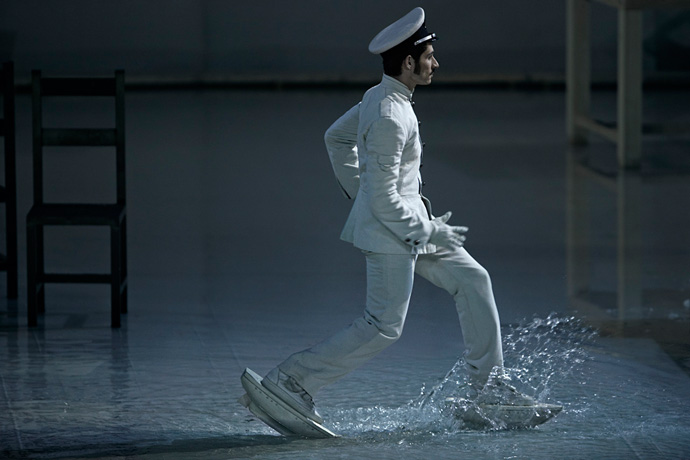 Jason crossing the sea. Scene from MEDEA2 by Dimitris Papaioannou. Photo by René Habermacher
Jason crossing the sea. Scene from MEDEA2 by Dimitris Papaioannou. Photo by René HabermacherMany people were suddenly exposed to my work through the Olympics, but of those who had a real interest, many were too young to have experienced MEDEA. So I returned to MEDEA, attracted by the idea of presenting it again with an all new cast, and approaching it with a new idea: to take the passion out. I wanted to reconstruct it, refine it, clear it out, strip it of anything unnecessary, drain the blood from the performance and deliver it in the cleanest form I could manage. That was my intention with MEDEA2.
Having done that, I could continue with new work, first NOWHERE and now INSIDE. This is a completely new phase, where I am tending to create shows with no protagonists and no characters. The crowd is the element I’m focusing on now, using it in a more open structure in order to create images involving spatial and human relationships.
Excerpts of MEDEA 2 accompanied by interview with Dimitris Papaioannou.
-

dimitris papaioannou : a pasolinian touch
-Dimitris Papaioannou’s work as a choreographer has significantly reshaped the Greek performing arts landscape.
With his directing of the Athens 2004 Olympic Games Ceremony, a ground-breaking success, he played his way straight in the heart of the spectators, hailed a “triumph” by TIME MAGAZINE and THE TIMES of LONDON.In 2005 Dimitris Papaioannou was awarded the Golden Cross of the Order of Honour by the President of the Hellenic Republic for outstanding artistic achievement. For his following shows “2″ and MEDEA2 enjoyed an unprecedented run in the Greek capital, each with over 100 000 tickets sold. This accelerated development came not without controversy. With his latest play INSIDE Dimitris returns to his experimental roots.
THE STIMULEYE met with him during a break of rehearsals in Athens, to speak about his new play and look back to his point of departure.
Following the first part of three on the conversation with Dimitris Papaioannou, accompanied with exclusive pictures by René Habermacher.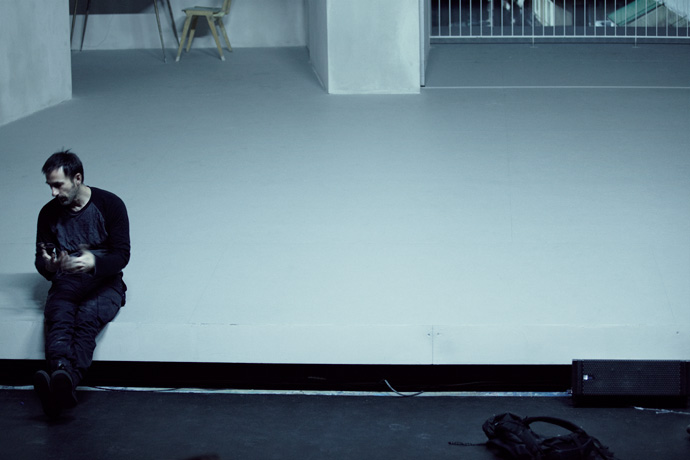 Dimitris Papaioannou on the rehearsal set for his new play INSIDE. Photo by René Habermacher
Dimitris Papaioannou on the rehearsal set for his new play INSIDE. Photo by René Habermacherpasolinian touch
DIMITRIS PAPAIOANNOU: I’ll be right with you — I’m just making a coffee!
RENÉ HABERMACHER: You’re freshly shaven! You look very 19th-century with your moustache.
I am from the 19th century honey, I’m very old!
It’s been a while since we had time for a talk, since I left Athens and you last visited Paris. We met only briefly during the rehearsals for your new play INSIDE, which you’re currently working on. You spent last Spring in New York. Tell me about what you did there.
I was there from March until June on a Fulbright Artist’s Scholarship. A mid-career scholarship obviously… [laughs]
Actually in a way I was studying the story of performance art [with Laurie Anderson at The Kitchen NYC] and developing my Final Cut Pro skills, as well as experiencing a little more of New York life, now that I’m a mature boy and things are different!
How was it returning to Athens after that?
For me it was a blessing because I discovered that I had left New York when I was still under construction. It’s the perfect place to be when you are like that, but in this phase of my life what I found there was a little more superficial than I would have liked. The Athens I returned to was in complete economic crisis and emotionally depressed, but still I was deeply relieved to spend summer back home.
Dimitris, I know you were born in Athens, but we’ve never talked about your childhood.
I was born and grew up in Athens, in a lower-middle class family. My parents made financial sacrifices so that I could go to a very expensive school, the Athens College. Then I had to run away from home because my parents wanted me to live the life of a straight architect. But I was a gay man, and I wanted to be a painter. I became the student of the Greek painter Yannis Tsarouchis* (1) in the old fashioned way, where painters trained people in their atelier. It was there I was introduced to true art. I had been painting since I was a child, but it was when I met Tsarouchis that I realised what painting really was. Later I entered the Athens School of Fine Arts.
* (1) : Yannis Tsarouchis, 1910-1989 One of the most important twentieth-century Greek painters, Yannis Tsarouchis portrayed and helped to define modern Greek identity. The deeply sensual painter was much influenced by the French impressionists and often depicted sailors, soldiers and the nude male body in erotic situations.
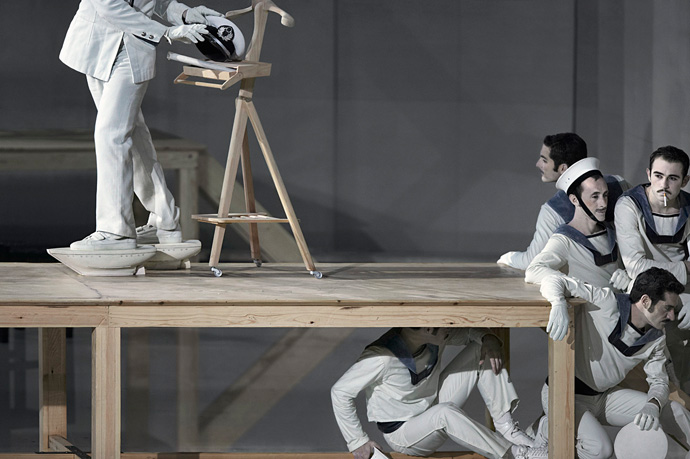 The departure of Jason in reference to Yannis Tsarouchis. Scene from MEDEA2 by Dimitris Papaioannou
The departure of Jason in reference to Yannis Tsarouchis. Scene from MEDEA2 by Dimitris PapaioannouHow did you meet Tsarouchis?
I knocked on his door. I showed him some my paintings and asked for his comments. He was not cruel, as he could have been, about those awkward early drawings — instead he was very polite. My college had organised an exhibition of my work in the building’s library, so I invited Tsarouchis to see my work up close. The next day he called me and invited me back to his house, after which he allowed me to watch him paint, and would give corrections on my paintings. I became his student.
How did this encounter shape you? Did it leave a mark on your artistic work?
Well, your first mentor leaves a strong mark on your life. I grew up in a house that had no contact with artists, there wasn’t a single painting on the walls. My parents weren’t very fond of art, it wasn’t part of their lives. I felt like an alien, wanting to enter this world. So Tsarouchis was the first artist I really saw working, and I realised that the life of an artist is possible and, to my eyes, very charming. I felt at home in a way. And he was a great painter. He had a quality that interests me a great deal: he could make magic with the humblest of materials — he could make roses out of toilet paper, use wires to make small sculptures. The thing I think I have learned from him is that you can make poetry out of garbage.
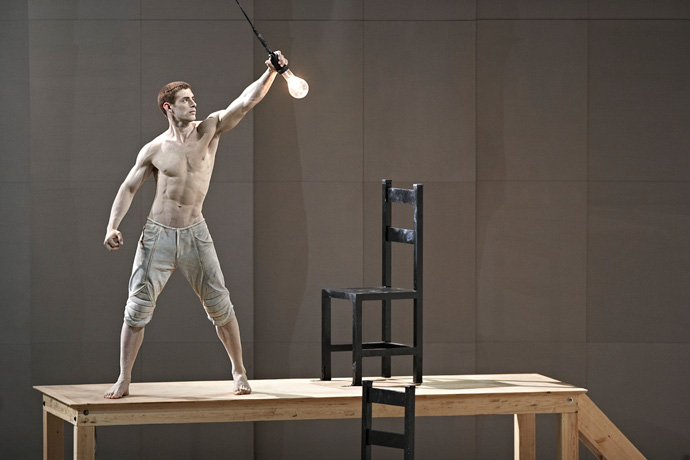 “Helios”. Scene from MEDEA2 by Dimitris Papaioannou. Photo by René Habermacher
“Helios”. Scene from MEDEA2 by Dimitris Papaioannou. Photo by René Habermacher
